Spring is the season of rebirth, rejuvenation, renewal, and the resurrection of sneezing and itchy eyes as pollen fills the air. I haven’t always felt the need to grab my camera with flowers. Fall and winter have been my favorite times to be out. Those are the seasons when I jump out of bed effortlessly, and it isn’t because of the later sunrise time. I’ve always enjoyed the dampening quiet from a blanket of snow and calming trance of leaves twirling in the breeze towards the ground. Although, with each passing year, my attraction to spring and flower photography grows (and here is why I think that is).
After the more monochrome moments of winter, I need to shift my brain back to working with more chaotic scenes and bold colors that bloom with spring. It’s almost like going back to basics. Taking something as simple as a flower, and when photographed “correctly,” it can portray such powerful emotion.
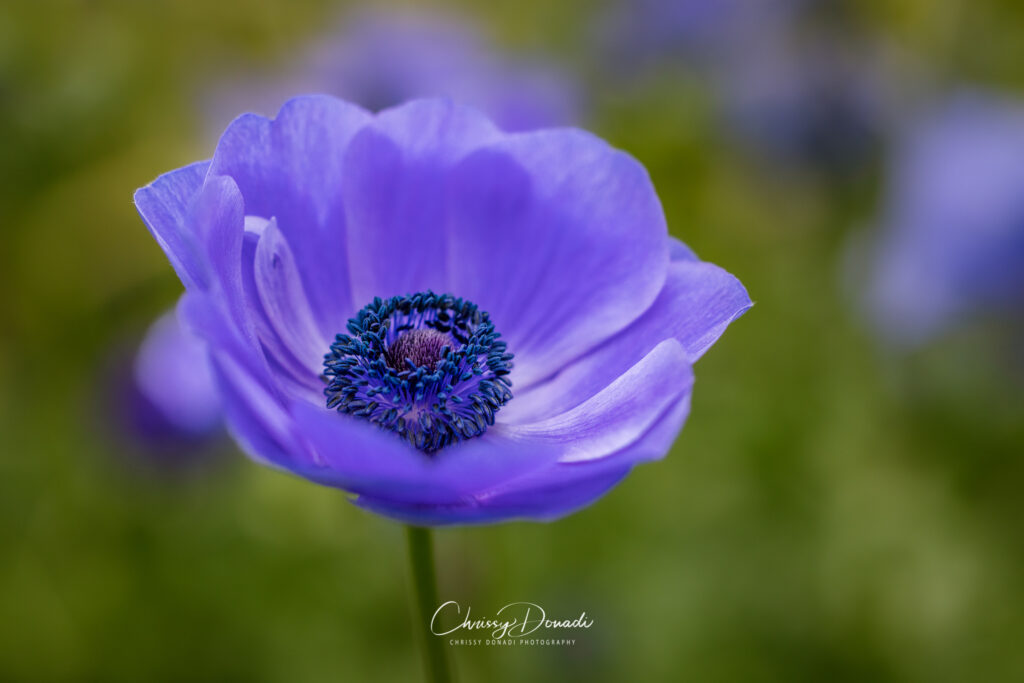
One common flower photography hurdle is being overwhelmed with the abundance of options. You are surrounded by so many flowers that it is hard to take the time required to really work a scene. You start jumping from flower to flower. Previously, I did this as well. I would photograph one flower for a few minutes and then see a new subject and turn the lens towards that one. Often, I felt and gave in to the pressure to move on quickly. There was so much more to explore. How many images do I really need of the same flower? Then, I would go home and all the images felt mediocre displayed on my computer screen. Somehow, I could rationalize spending ample amounts of time composing a grand landscape scene but felt like I should be able to photograph a small scene quickly.
Small scenes don’t work like that. In any nature photograph, details matter. The edges of the frame matter. The elements you chose to be in focus and out of focus matter. The light matters. The lens choice matters. The angle from which you photograph matters. All those choices impact the final image and contribute to the storytelling. Investing the time to work through all those details is what delivers an impactful image, an image that conveys emotion. This leads me to my biggest piece of advice to improve your flower photography: the practice of photographic promiscuity and then perennial wooing. It’s this mantra that has delivered satisfaction to me and my image portfolio. So how does it work?
The Practice of Photographic Promiscuity
Flowers are changing so quickly that I consider this the time to speed date with them. That’s right, I’m speed dating flowers. I walk, I wander, and I greet each patch looking for something that intrigues me. I make it a point to wander around the area making note of which flowers call to me the most. And once I find that special someone, I shift to courtship and understand that I may need to take it slow. That’s the first secret to improve your flower photography: remove the expectation that you should photograph many flowers and that creating a flower image should be quick.
Sure, there are these random moments where it feels more like I’ve been reacquainted with an old friend. It’s that spark you feel when you meet someone and instantly hit it off. For example, I notice a raindrop perched perfectly on the pistils of a magnolia. Within an instance, I know that water droplet is my focal point and can easily decide how much soft focus I want for the image. It is an effortless relationship. Or maybe it’s more like that friend where you can go months or years without talking, but the minute you are reunited, you pick up right where you left off. You just get each other. This does happen, but it’s rare. More often than not, it’s courting a flower that delivers to my portfolio.
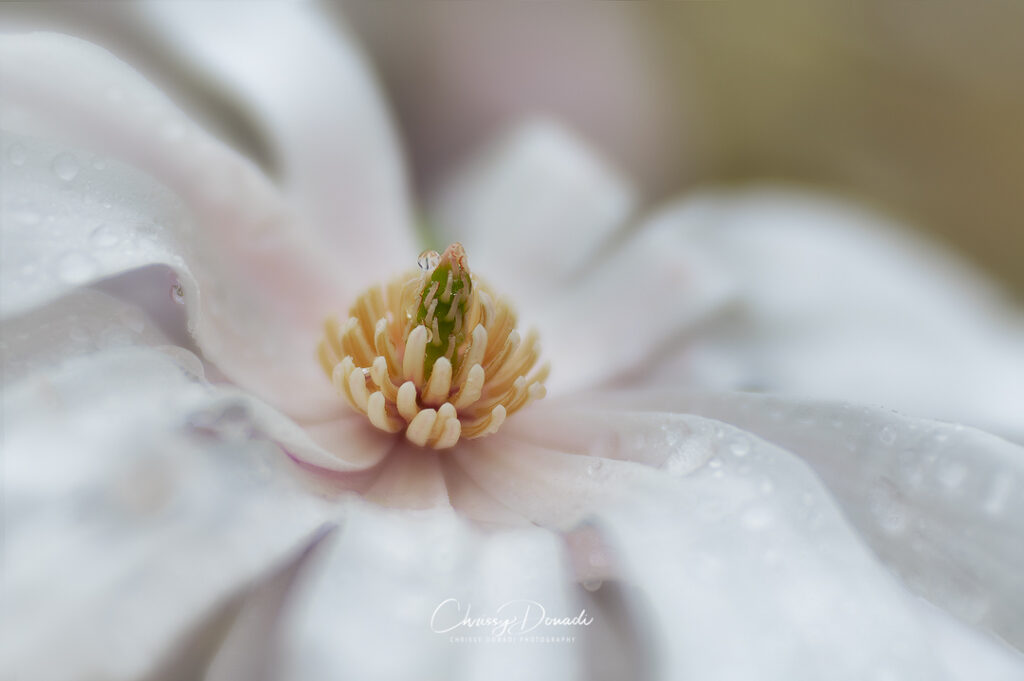
Shifting Towards Perennial Wooing and Courtship
After my round of speed dating, I select which flowers are worth putting in the time to create a budding friendship, so the image delivers that same spark and smile when placed in my portfolio. This perennial wooing or courting my flower allows me to connect with the scene and find the best composition and focus.
During my proper date with the flower, I slow down and think of how I can refine my composition. To ensure I pay attention to the details, I consider each refinement to the composition as part a 5-course meal (hors d’oeuvre, appetizer, salad, main dish, dessert) on our date. First, I photograph my initial composition. Let’s call this the hors d’oeuvre composition. Then, I review it from the back of my camera without any other information on the LCD screen. I’ll try to improve the composition, perhaps I decide to try a different angle to simplify the background. That’s the appetizer. After I review that second composition, I notice something distracting from the edge of the frame so I adjust slightly. Okay, I made it to the salad. Next, I toy with the selective focus to get the right about of bokeh or blur. We’re at the main course.
Finally, I try to think of what else can improve the image, maybe the lighting, the angle, the distance from the lens, etc. I’ll adjust again (dessert) and maybe again (say, a post-meal drink). This may sound ridiculous but it’s an easy and fun way to remind myself to keep pushing my creativity a little further. So often, it’s the 5th or 6th refinement to my composition where I start to see the magic coming through. All those little adjustments make a huge difference in the final image.

How Do You Know Which Flowers Are Worth Courting?
This is a little bit of a chick and egg situation here. With flower photography, it’s hard to know where to invest your time unless you have learned all those little details on what works and what doesn’t. If I really try to sit and break down what I do in the field, these are some of the things I’m looking to find as I explore.
Look for duplication, or symmetry. Flowers with beautiful symmetry are pleasing to the eye. Naturally, we appreciate the balance and sense of calm they present. In addition, looking for duplication or a mirroring effect with flowers. On the rare occasion, I’ll find a repeating pattern.
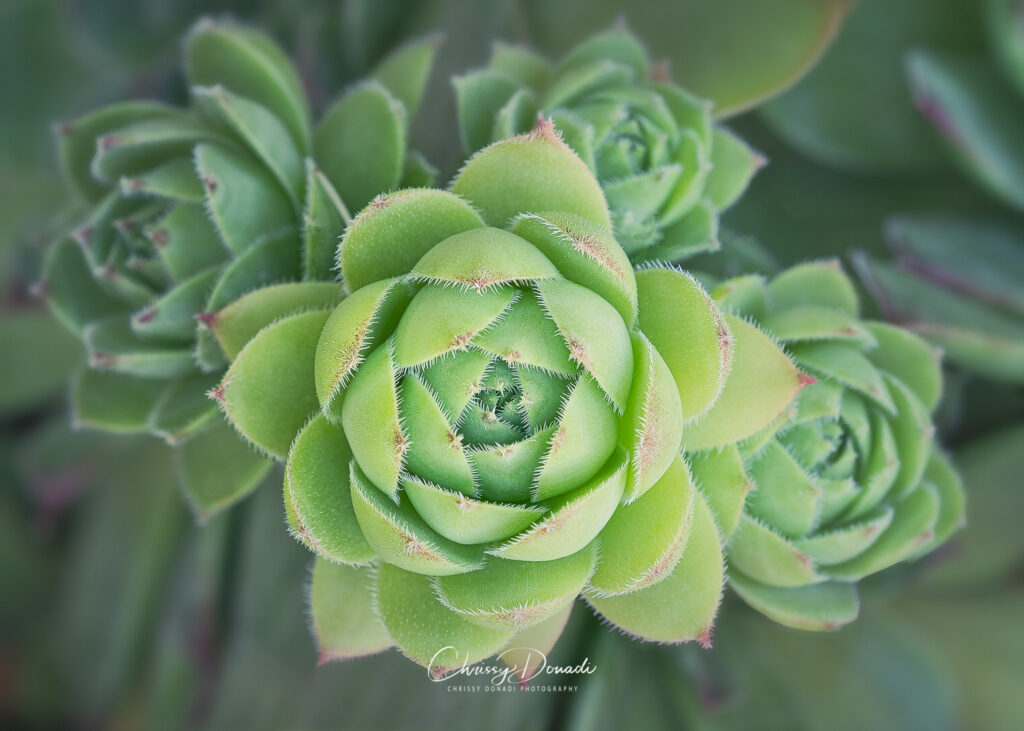
Look for openings. So often we are looking for the perfectly peaked symmetrical bloom. When I do find that perfect flower, I photograph it. Those often look best straight on. Although, keep your eye out for flowers that have one petal drooping or area torn. Anything that will give you an opening to peer into the flower’s center. It raises the curiosity of what you’ll find inside. This is where selective focus becomes important to ensure you guide the viewer’s attention. Naturally, attention will be drawn to the brightest and sharpest parts of an image.
As a visual example, in the image below, the tulip on the right intrigues me more since those drooping petals allow me to peer inside the flower. But notice how that one bright, blade of grass competes for your attention despite being blurred.
Now, these can be openings in the flower, but also openings in the surroundings. An empty area among the flowers might offer a gap to photograph from a different perspective. A taller poppy sticking up from the group is easier to isolate and remove background distractions.

Look for unique features. These features are often eye catching for a viewer. It’s finding a curious curl on a rare Blue Himalayan Poppy and spending too much time trying to win it over. The ruffles and curls of this blue poppy allow for an entirely different feel than a typical poppy photo.
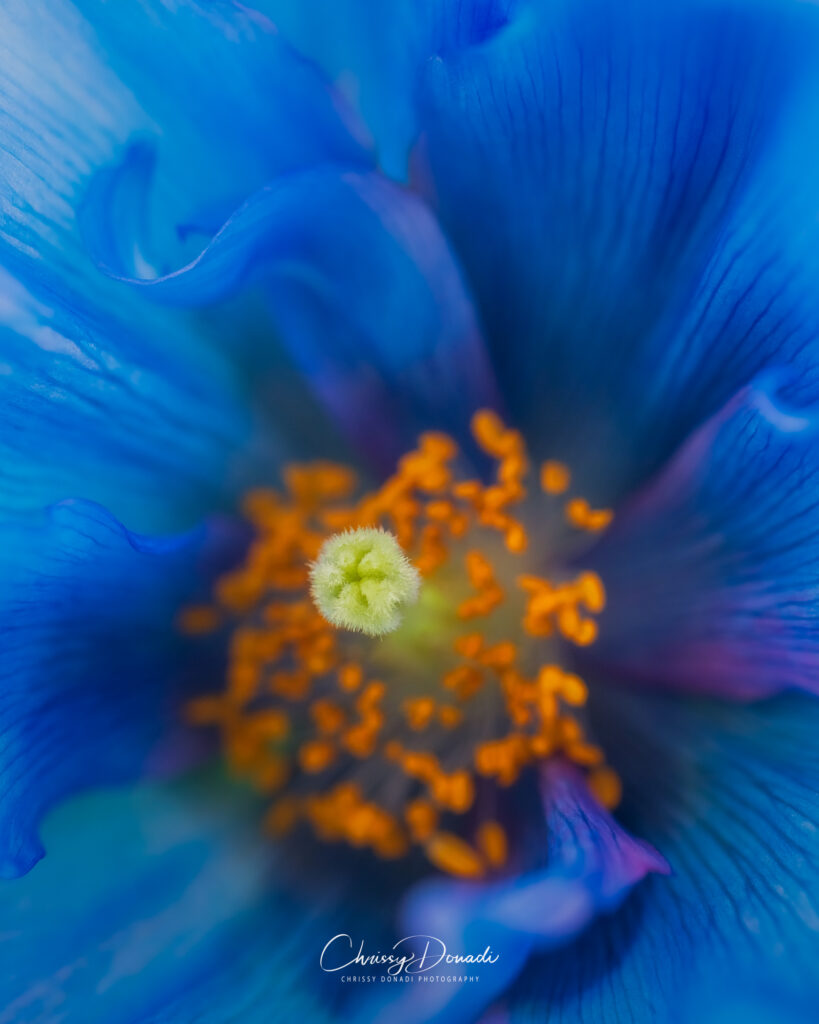
What is Proper Courting Etiquette for Flower Photography?
Photograph with your pinky up. No, kidding. Once you find your flower you wish to make your friend, start to build your relationship by refining the composition. What emotion do you want to convey? Is there a sense of movement? Should the flower fill the entire frame? Is the background too distracting?
Try different distances. Move the lens closer or further away from the subject. How much depth of field feels right to you? What do you want in focus? Move around to try and simplify the background.
Try different angles. Literally rotate your camera all the way around, if need be. Portrait. Landscape. Flowers can look magical in all different ways. Keep your eyes open for abstracts, shapes, patterns, and even a sense of movement. With digital photography, there’s no reason not to try something. You can always delete it, or you might surprise yourself and fall in love with the result of your experimentation.
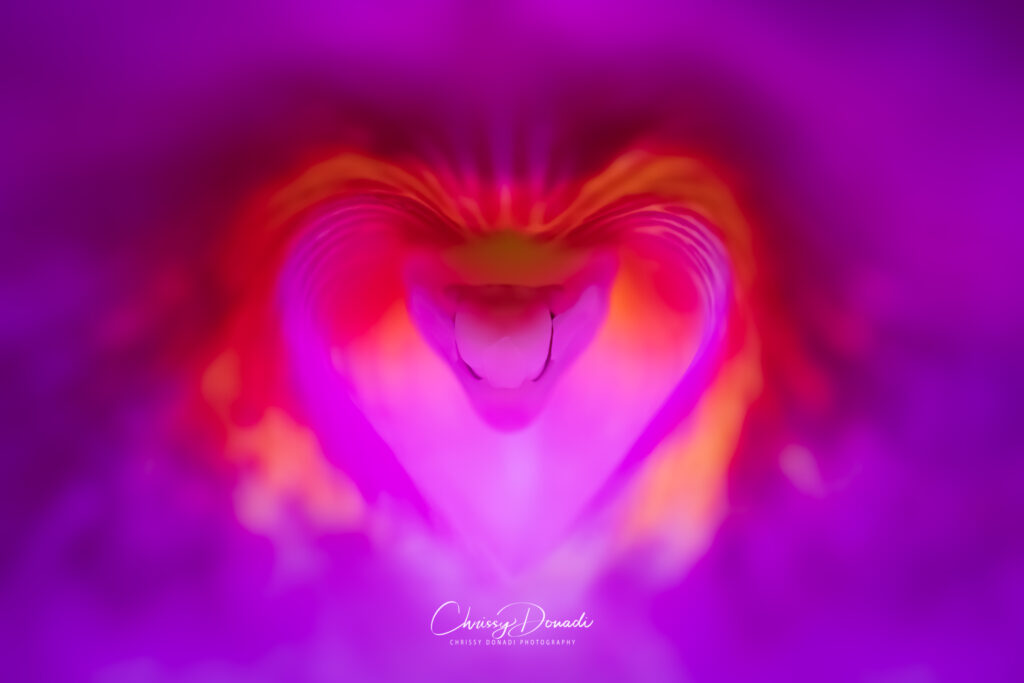
Try different lenses. For example, use a macro lens if you want to get in close and have a shallow depth of field (small sliver of the frame in focus). If you want to give the impression that the flower is larger than it really is, switch to telephoto. This lens compression gives the appearance that the background has pulled in closer to the subject. Additionally, you will be able to photograph with a deeper field of focus so more of the flower will be in focus.
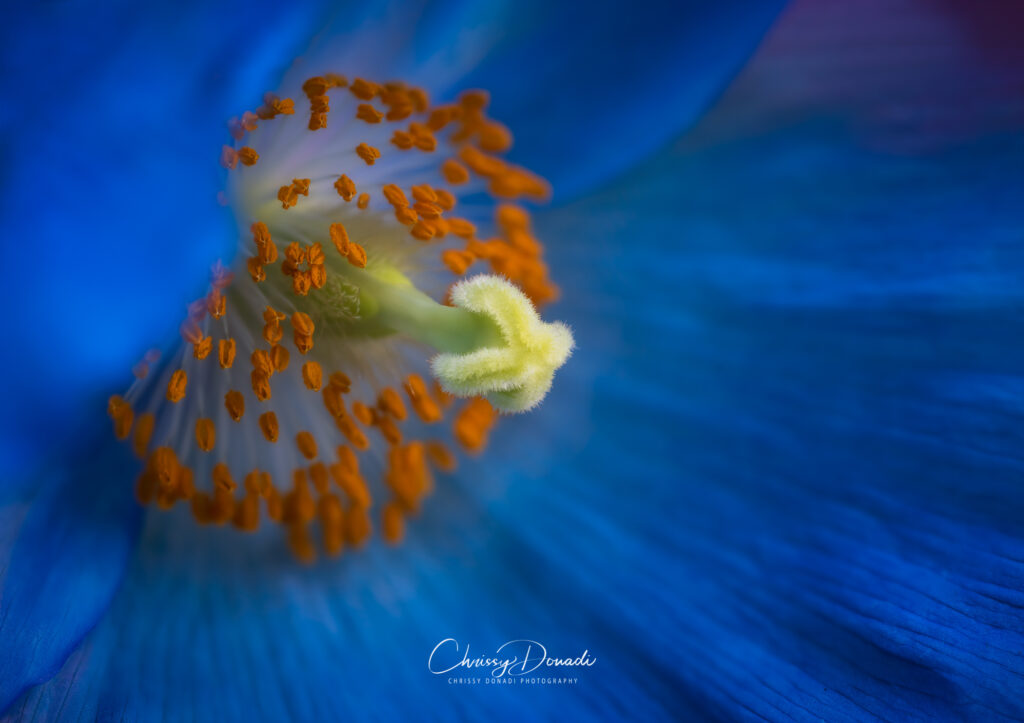
I’m able to get inches away from the flower and fill the frame but have a narrow depth of field so must choose my camera angle and focus point carefully.
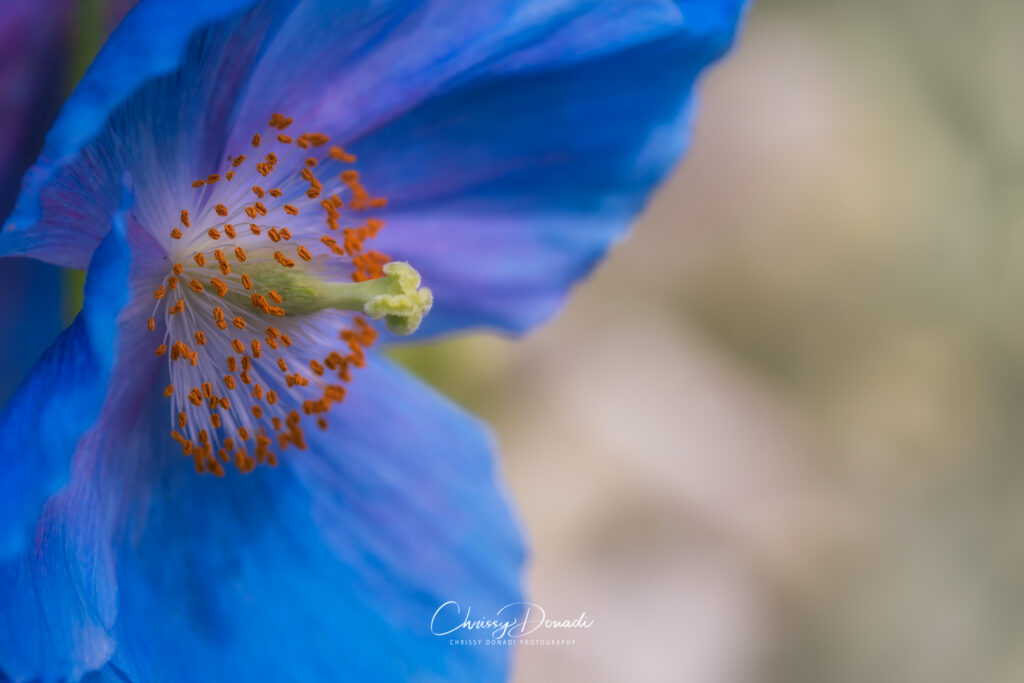
With the telephoto I can stand far away and use the zoom to help isolate the flower from the background with more of the yellow stamens in focus. This is much easier if I’m unable to use a tripod and need a higher shutter speed.
Even out the light. You can photograph a flower in any light, but even light is one of my favorites. Most times I carry a small diffuser in my pack. And if not, I’ll have a jacket or something that I can use to create some shade to even out the light in the scene.
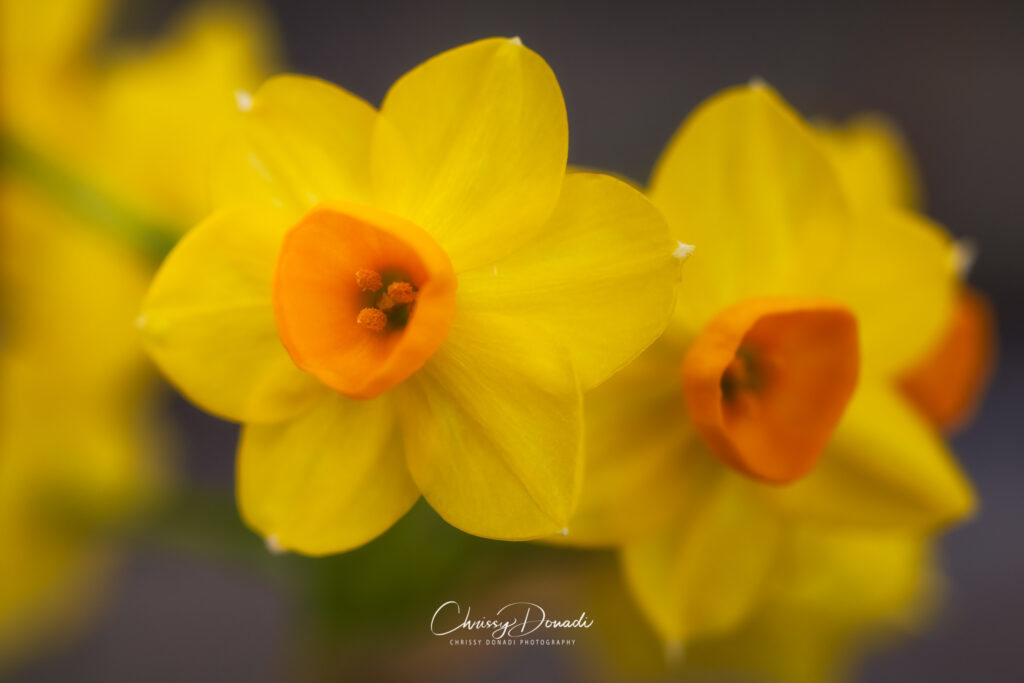
Take your time. If spending the entire day with one flower makes you happy, do it! Every minute you spend with nature gives you a deeper connection to nature and life. I wish I would have let myself slow down and enjoy the experience years ago. It is time well spent watching a flower bud give one last hug before it lets that flower go free to bloom.
Be Patient. Yes, this is different than taking your time. Taking your time refers to spending time with your subject and refining your composition. Even with my final composition selected, there are plenty of times that wind and/or the lighting conditions test my patience. In those cases, I’ll wait until a cloud moves overhead or create my own shade with a diffuser or even my coat. Other times, wind causes so much motion that it takes 50 frames until the I capture perfect focus.
All this time spent tinkering among the flowers helps me slow down and refresh my photography skills for the season. Not only does this improve your flower photography, it sharpens your awareness of all the little details and choices that go into creating an image. This is the preparation I need for when the lush greens cover the landscape, and I turn my camera to more grand landscape scenes.
I didn’t know there are Blue Poppies. Thank You so much. 😁
Yes! And they are definitely worth an excursion to a nearby botanic garden (if they have them). More than welcome!